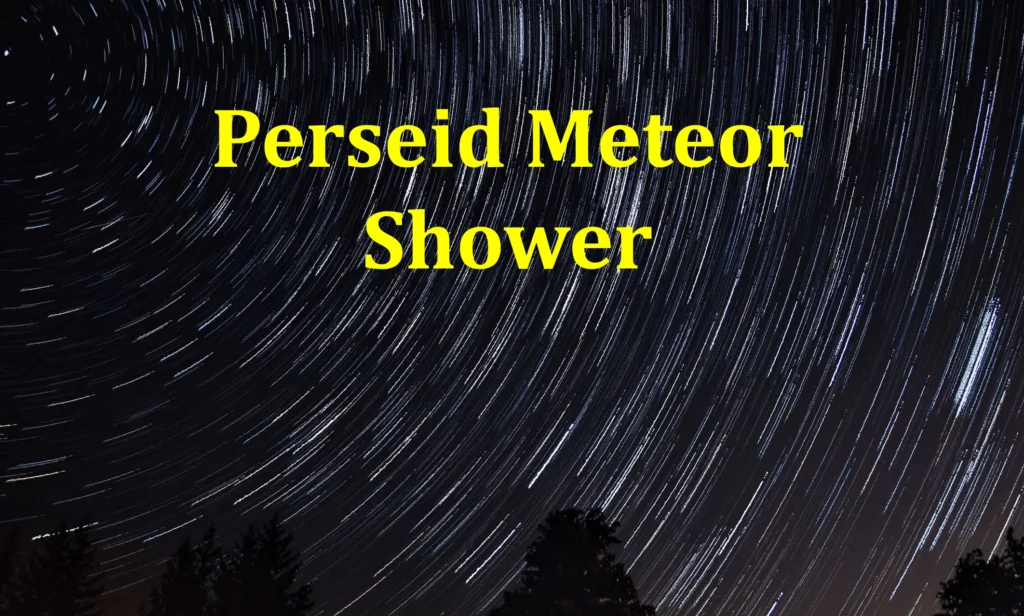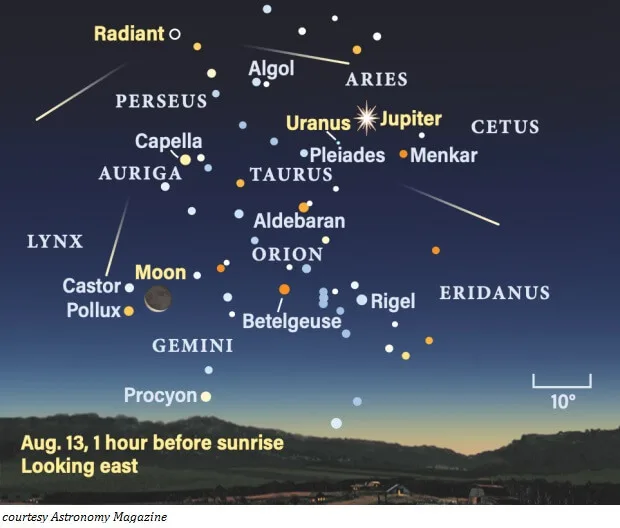
Hello, my dear Readers today, I am full of excitement as I will write for you, about the cosmic activity that takes place every year between July and mid of August. Picture yourself looking up at the dark sky at night and suddenly, you see an incredible show of shooting stars. Now, we get an amazing chance to see this happen for real! The Perseid meteor shower is on its way to light up our night sky. It’s like a special space phenomenon that you really shouldn’t miss. The coolest thing is you don’t need anything fancy – just your eyes – to watch this incredible show. Let’s find out when, where and how you can catch this awesome event.
A Cosmic Showtime
This weekend nature has a treat in store for us—an enchanting meteor shower known as the Perseids. On the night of August 12th to 13th, as the clock ticks towards midnight on the 12th, the show begins. Picture this: streaks of meteors painting the sky, dazzling and mesmerizing all those who cast their gaze upwards.
Starry Perseid Meteor Shower
Early morning on the 13th is when the meteor shower takes center stage, with a maximum rate of 100 meteors per hour. While most of us might catch around 50 to 60 meteors per hour (that’s nearly one meteor per minute!), it’s still a celestial spectacle to behold. The magic will unfold from late on the 12th through the early hours of the 13th, ending as dawn starts to illuminate the horizon.
Prime Time for Perseids
For the ultimate meteor-gazing experience, set your alarm a bit earlier on the 13th. An hour or two before sunrise is the golden hour, where the meteor shower’s radiant point is highest in the east. During this time, you’ll witness more meteors covering the sky. Additionally, you’ll be standing on the Earth’s leading side as it ventures through the comet’s debris stream that fuels the shower.
Missed the Peak?
Oh, no you can’t make it outside during the peak or dealing with less-than-ideal weather. Don’t worry! While the meteor numbers might dwindle after the peak, you’ll still be treated to an above-average meteor rate for a few more days. So, there’s still a chance to catch this cosmic extravaganza.
Where in the sky
As you step outside, direct your gaze to the constellation Perseus. Around 11 P.M. local daylight time, Perseus rises above the northeastern horizon. The radiant, where the meteors seem to originate, sits about 2.5° northeast (lower left) of Miram and around 8° northwest (upper left) of the bright star Mirfak. As the night progresses, this region climbs higher in the east, reaching its peak just before dawn.


Unveiling Meteor Magic
To catch the longest, brightest meteor trails, focus your sight about 45° away from the radiant on either side. And here’s a pro tip: find a spot away from ground light to make the fainter meteors stand out against the darker sky. With a slim crescent Moon, its light won’t steal the meteoric spotlight.
Easy Viewing Tips
There is one more surprise that no fancy equipment is needed for this show—just your eyes! Look up and scan the sky with your unaided vision to catch the meteoric magic. If you’re thinking of snapping some photos, try this trick: set up your camera on a tripod, take long exposures and capture star trails along with meteor streaks or opt for multiple short exposures to capture meteors crossing a starry background.
Cosmic Tale behind the Phenomenon
The Perseid meteor shower is a tale written by Comet 109P/Swift-Tuttle, a celestial wanderer that swings by every 133 years. Its last visit was in 1992, and it won’t be back until 2126. Yet, its stardust lingers, gracing our skies with this luminous spectacle year after year.
So, dear readers get yourself all set and prepared to be amazed by the dazzling and radiant show that the Perseid meteor shower is about to put on. With nothing but your eyes and a bit of curiosity, you can witness this breathtaking cosmic dance. This meteor shower is a mesmerizing show that reminds us of the endless beauty stored in the universe. Although, various space mission such as one discussed in my previous blog about Voyager has been deployed in the space for exploration. But all these explorations are capable of exploring only a tiny portion of the space. So, set your alarm, find a cozy spot under the stars and let the celestial symphony unfold before your eyes. Do share your experience through comments and photos through email.
